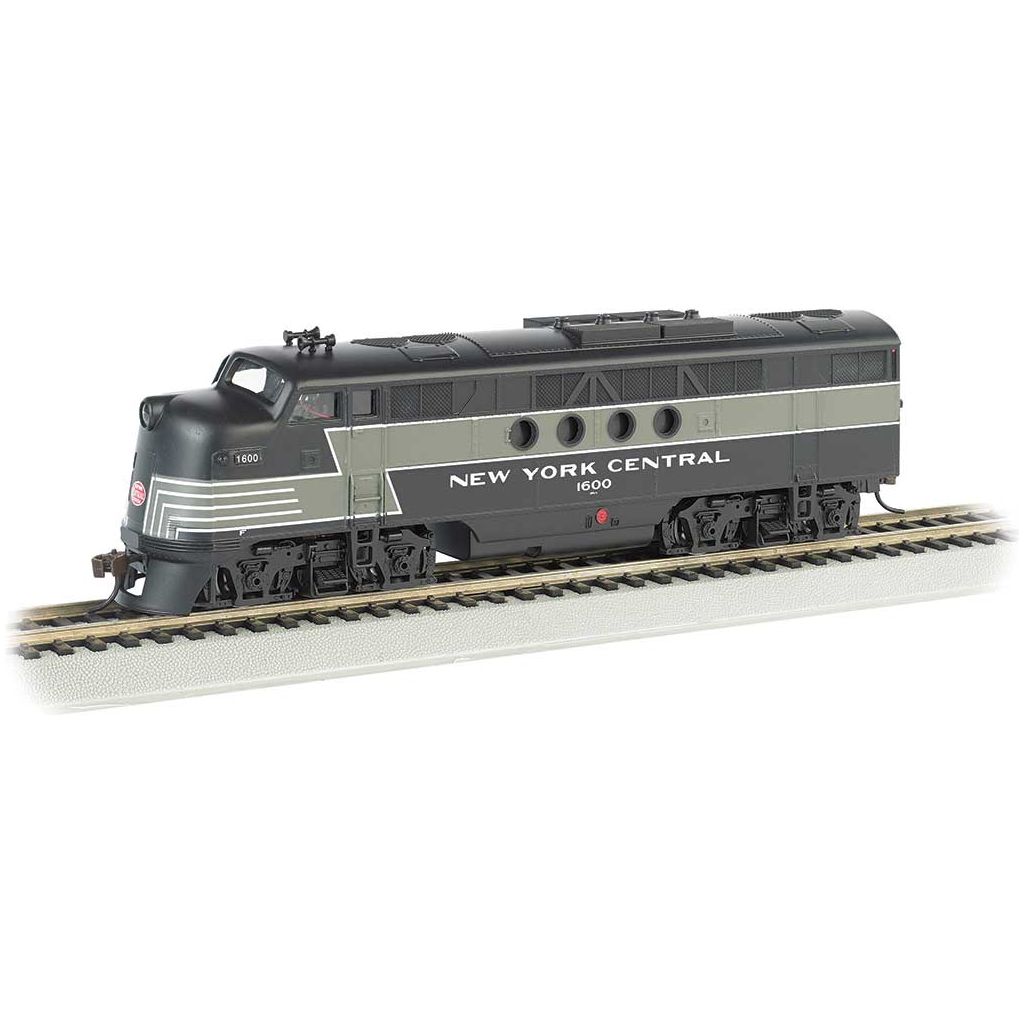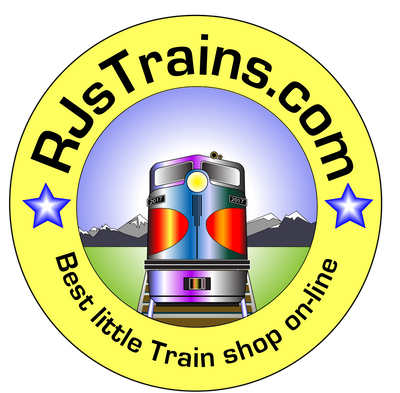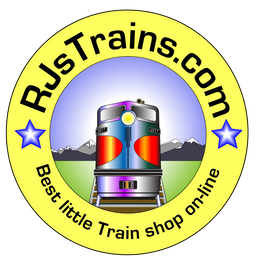
Bachmann, 68912, HO Scale, EMD FT-A, New York Central, #1600, DCC & Sound
- Low stock - 1 item left
DCC WOWSOUND EQUIPPED MODEL
Lightning Stripe Scheme
This HO-scale FT-A features a TCS WOW Sound 16-bit decoder with a Keep-Alive functionality that allows for nonstop track action, even if the track happens to be dirty. The sound package also includes 8 whistles, 5 bells, and so much more!
Features:
DCC sound-equipped with TCS WOW Sound 16-bit decoder
Keep-Alive device to continuously run your engines without stopping from electrical contact loss or dirty tracks
Dual-mode (NMRA) decoder
Functional pagination to expand control with Bachmann's E-Z Command system
RP25 wheel contours
E-Z Mate Mark II couplers
Fully-functional headlight
Genuine metal side rods
Prototype information
EMD FT Series Locomotive: A Revolution in Railroading
The EMD FT Series Locomotive was a groundbreaking innovation that marked the beginning of the transition from steam to diesel power in American railroading. Manufactured by the Electro-Motive Division (EMD) of General Motors, the FT series was designed specifically for freight service and set new standards for efficiency and reliability.
Production History and Quantity
The FT series was produced from November 1939 to November 1945. During this period, 555 FT units were built, comprising both A-units (with cab) and B-units (cabless boosters). This production run included multiple configurations, such as single A-units, single B-units, and A-B sets, to meet the diverse needs of different railroads.
Railroads That Utilized the FT Series
The EMD FT locomotives were adopted by numerous major railroads across North America, thanks to their superior performance and cost-effectiveness. Some of the prominent railroads that operated FT units include:
-
Chesapeake and Ohio Railway (C&O)
-
Santa Fe Railway
-
Union Pacific Railroad
-
Baltimore & Ohio Railroad (B&O)
-
Southern Railway
-
Great Northern Railway
-
Southern Pacific Railroad
-
New York Central Railroad
These locomotives played a pivotal role in replacing steam engines on these railroads, contributing to the broader dieselization movement in the United States.
Longevity and Impact
The EMD FT series locomotives had a significant operational lifespan, with many units remaining in service for several decades. While some FT units were retired or repurposed by the late 1950s and early 1960s, others continued to operate into the 1970s and beyond, especially in secondary and less demanding roles. Their success paved the way for subsequent EMD F-series models, such as the F3, F7, and F9, which further solidified diesel power's dominance in railroading.
Technical Specifications
The EMD FT series was designed with advanced technology for its time, providing a combination of power, efficiency, and ease of maintenance. Here are some key technical specifications:
-
Engine Type: 16-cylinder EMD 567 V16 two-stroke diesel engine
-
Power Output: 1,350 horsepower (A-unit) and 1,350 horsepower (B-unit)
-
Prime Mover: EMD 567 series
-
Traction Motors: Four D7 traction motors per unit
-
Wheel Arrangement: B-B (four axles, all powered)
-
Length: 50 feet 1 inch per A-unit
-
Weight: Approximately 239,000 pounds (A-unit)
-
Fuel Capacity: 1,200 gallons
-
Maximum Speed: 65 mph
-
Tractive Effort: 54,500 pounds starting tractive effort
Innovations and Legacy
The EMD FT series introduced several innovations that contributed to its success:
-
Modular Design: The A-B unit configuration allowed for flexible train consist arrangements, optimizing power as needed.
-
Improved Fuel Efficiency: Diesel engines offered greater fuel efficiency compared to steam, reducing operational costs.
-
Lower Maintenance: Diesel locomotives required less maintenance than steam engines, resulting in higher availability and lower costs.
-
Reliable Performance: The EMD FT series demonstrated consistent performance across various conditions and terrains, proving its robustness and versatility.
The impact of the EMD FT series on the railroad industry cannot be overstated. It marked the dawn of the diesel era and set the stage for the widespread adoption of diesel-electric locomotives, which continue to dominate railroads to this day. The success of the FT series validated the benefits of diesel power and ushered in a new chapter in railroading history, characterized by increased efficiency, reliability, and innovation.
Passenger and Freight Service
While primarily designed for freight service, some railroads did use the EMD FT series for passenger trains, especially on routes where passenger and freight services shared the same tracks. The FT series was versatile enough to handle both types of service, but its main purpose was to haul freight efficiently and reliably.
What "FT" Stands For
The "FT" in EMD FT Series Locomotive stands for "Fourteen Hundred" (1400) horsepower, rounded from the actual 1350 horsepower, and "Twin", as it typically came in a two-unit set (A-unit with cab and B-unit without cab).
In conclusion, the EMD FT series was not just a locomotive—it was a symbol of progress and transformation in the world of railroading. Its legacy lives on in the continued use of diesel-electric technology and the enduring impact it had on the industry.

